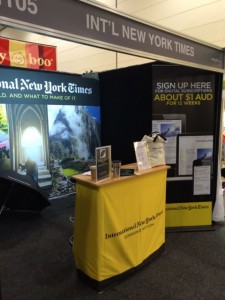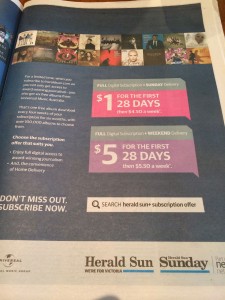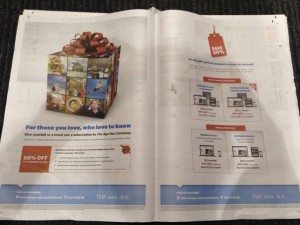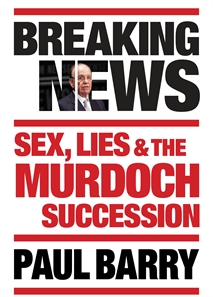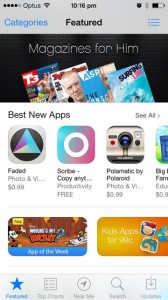 I was on Apple’s AppStore last night and noticed this ad: Magazines for Him. Clicking on the ad and I was offered what at first appeared to be free access to apps for Rolling Stone, Money, T3 and other titles. With many magazine apps, however, the content is not free, just the app for accessing the content. But that’s not what I wanted to write about this morning.
I was on Apple’s AppStore last night and noticed this ad: Magazines for Him. Clicking on the ad and I was offered what at first appeared to be free access to apps for Rolling Stone, Money, T3 and other titles. With many magazine apps, however, the content is not free, just the app for accessing the content. But that’s not what I wanted to write about this morning.
Seeing the ad for magazines reminded me of a fundamental change impacting retailers, including newsagents, today. We – retailers, wholesalers and product manufacturers – are in a race to get to the consumer first. The days of the shop being the place where things are bought are over. The shop is but one location. Today people are shopping in every location possible, they are shopping 24/7. That is how large online and bricks and mortar retailers see it. They are investing in strategies to be first to the consumer, anticipating their needs if possible so they can decrease the time between desire and fulfilment.
Retailers who focus only on their shop have an incomplete business strategy. Growth today more than ever required a multi-layered multi-channel strategy.
The question we newsagents need to ask ourselves individually is what are we doing to tap into the shop anytime shop anywhere mindset of today’s mobile consumer?
To get a feeling for how retail is changing: there was a story a couple of days ago about Amazon patenting an anticipatory shipping system that predicts orders. Their algorithm predicts what you may purchase based on previous purchases and it will ship those items to the warehouse closest to you – to reduce the time it takes to fulfil your order. This is pretty amazing stuff.
While in the US a couple of weeks ago I met with a company and was shown technology that retailers like newsagents can integrate with that enables us to capture a shopper interested in a product or category before they are near our shop.
These are just two of the moves that we need to factor into our business plans. On first glance they may feel too complex for us to engage with. the reality is that these and other moves are do or die for retailers. This is the world we are in today – the rules have been set by others, we have to engage for our businesses to have value.
It may sound trite but we newsagents can do this, we can embrace the new shopping model and be relevant as a small independent retailer. It starts with becoming aware and that is, in part, what this blog post is about.
Engagement with customers is key to our future. Connecting them with us so they remember us and come back to us is key. There are various ways newsagents can do this today. Those who are not, and that’s the majority of the channel, risk the commercial consequences of a disconnect from our customers.
I’m optimistic about retail and newsagencies. Yes I see plenty of change, but this is not new. We have to face it and walk with it, changing our businesses appropriately.
On the small issue of magazine apps being available through the Apple AppStore: this is what publishers need to do – and, yes, they need to do it directly and not through newsagents. We are not entitled. repeat: we are not entitled.
